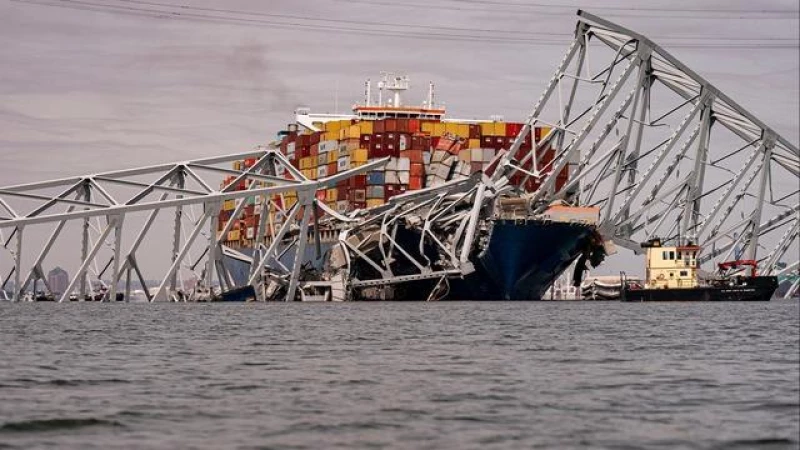News footage captured the dramatic moment a colossal cargo ship crashed into Baltimore's Francis Scott Key Bridge in the early hours of Tuesday, causing sections of the aged suspension bridge to collapse into the Patapsco River.
Authorities revealed that six individuals who were on the bridge at the time of the incident are now missing and presumed to have lost their lives. Two people were successfully rescued from the water. All eight individuals were construction workers engaged in repairing potholes on the bridge. The cargo ship, named the Dali and owned by Singapore, had 22 Indian nationals on board, including two pilots.
Efforts are underway to piece together a detailed timeline of the events leading up to the collision, shedding light on why the Singapore-owned vessel collided with the bridge shortly after departing from the port. Here's the latest information available:
What led to the Dali colliding with the Francis Scott Key Bridge?
The Dali, chartered by the shipping company Maersk and operated by Synergy Marine Group, struck the Francis Scott Key Bridge just moments after setting sail from the Port of Baltimore.
According to sources from CBS News, a series of alarms went off on the vessel, signaling to pilots and crew members about an issue onboard. Despite running multiple system tests to address the loss of propulsion from the motor, the attempts were unsuccessful. Subsequently, the ship's pilots contacted the Maryland Department of Transportation and the Maryland Transit Authority for assistance.
Thanks to this alert, local officials were able to halt traffic on the bridge, potentially preventing a disaster, as stated by officials. The crew of the vessel also tried to deploy the anchor, although the extent of progress made remains unclear, as per multiple sources. With a length exceeding 900 feet and a speed of approximately 8 knots (around 9 miles per hour), authorities labeled the ship's velocity as "very rapid."
Michael Burns, the Captain and executive director at the Maritime Center for Responsible Energy of the Massachusetts Maritime Academy, explained to CBS Baltimore that bringing a cargo ship to a stop swiftly is a challenging task under such circumstances.
"It's extremely challenging, and takes years of experience and training in order to be able to do this safely," he said. "It can take up to a mile for some of these ships to get stopped, depending on the circumstances, so we really need to think well out, miles ahead of the ship."
Why did the Dali lose propulsion?
It's not clear what caused the vessel to lose propulsion, officials said.
A spokesperson for the NTSB told CBS Baltimore that it had collected the ship's data recorder, and would review and analyze the material there to determine what happened aboard the vessel in the moments before the collision.
That data recorder will also be used to establish a timeline of events.
What happens when a ship loses propulsion?
James Mercante, the president of the New York Board of Pilot Commissioners, told CBS News that a ship that has lost steering and power is essentially "a dead ship just being carried by the current or its own momentum."
He highlighted a moment in the video of the crash that appears to show a "big, big puff of black, real dark black smoke" which might indicate that the vessel's power was "restored at the last minute" and that the pilot was "attempting to make an emergency maneuver" to avoid hitting the bridge. However, he emphasized that it would be difficult to stop the massive cargo ship, especially in such a short time.
Massive Ship Takes Length of Five Football Fields to Stop
According to Mercante, stopping the massive ship would require the length of five or six football fields, even after dropping the anchors. The ship's power and momentum make it a behemoth on the water.







